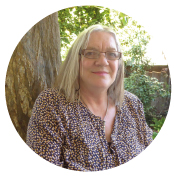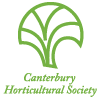 Where were you born and where did you spend most of your childhood?
Where were you born and where did you spend most of your childhood?
I was born in Christchurch, the second eldest of six girls and one boy. It was a busy, noisy creative household. My Mum was incredibly nurturing, efficient and house proud. She gave us her time willingly and introduced me to wonders of nature. My father had a love of the outdoors and animals. 0ur local playgrounds were the Heathcote river, Beckenham Ponds, Risingholme, and Botanical Gardens. At home we grew up with a menagerie of animals, namely canaries, geese, pig, rabbits, lambs, and a magpie. We had many free range fowls providing eggs. As was typical of the 1950/60’s our home was on a . acre section, laid out with manicured lawns, weed free roses, flower and lily gardens, shrubs in the front and side of the house and expansive vegetable gardens, fruiting trees and bushes. The family played and toiled in the garden both to grow for necessity to feed a large family, sell surplus and create an aesthetically pleasing environment.
Where do you live now?
Richard and I live in St Albans in a house which we built nine years ago. Our children have left home but currently live in Christchurch.
What aroused your interest in gardening or horticulture?
I believe my interest in gardening and horticulture is in my DNA, a legacy from my parents and earlier generations. Childhood gardening has given me a feeling of ‘spiritual’ connection with nature and the earth, a sense of mental and physical well being and balance; pleasure from my efforts, an outlet for creativity and self sufficiency in growing food and maintaining a healthy ecosystem. It has forged friendship with like-minded people, and the value of sharing of knowledge, plants and excess produce is rewarding.
What gardening or horticultural interests do you have now?
Maintaining and developing our home garden which provides an outlet of my artistic creativity. My interests include topiary, espalier, growing from seed, companion planting, making compost and using more natural remedies for plant health, planting plants that foster the bee and insect population. I am now an active member of various gardening clubs and societies namely The Christchurch Beautifying Society, Lily Society, Alpine Society and garden clubs.

What’s your favourite plant and why?
Presently I am enjoying the Japanese painted fern, mosses, pussy willow and flowering magnolias and dogwoods for their patterns, textures and form. The dandelion seed head and cabbage are themes for my film photography. Fragrant Bouquets of sweetpea, lily, violets, pansy, snowdrops and lily of the valley evoke poignant memories of significant people in my life. NZ and exotic alpine and woodland plants and the shrubs strachyrus praecox and edgeworthia are worthy of note.
What’s been your most challenging and/or rewarding gardening project ?
Designing, developing and establishing our bare clay and water logged section into an aesthetic garden with water features. This required being rescued at one stage from a rock fall!
When did you join the CHS and why?
Two years ago I ventured beyond the garden gate and became involved in community garden groups. The mission statement of CHS was the impetus for me to join. To celebrate we are still gardening in Christchurch post earthquake, I was encouraged to put my garden in CHS 2015 Spring Garden Awards to share my efforts and subsequently I have received much enthusiastic praise.
What is your passion for the future of the CHS?
That the CHS has a higher profile and voice in Christchurch’s environmental planning for the future. It appears there are fragmented horticultural/gardening initiatives and groups in Christchurch which seldom communicate with each other. It would be great if there was more unity or central information gathering hub. It is disappointing for me as a past Occupational Therapist to see that the present CHS offices are upstairs without lift access. This limits a number of people with disabilities or physical limitations accessing the offices. CHS focus should be equity and inclusion of school/community groups and individuals so their key activities in their mission statement can be reached and accessed by all people.

